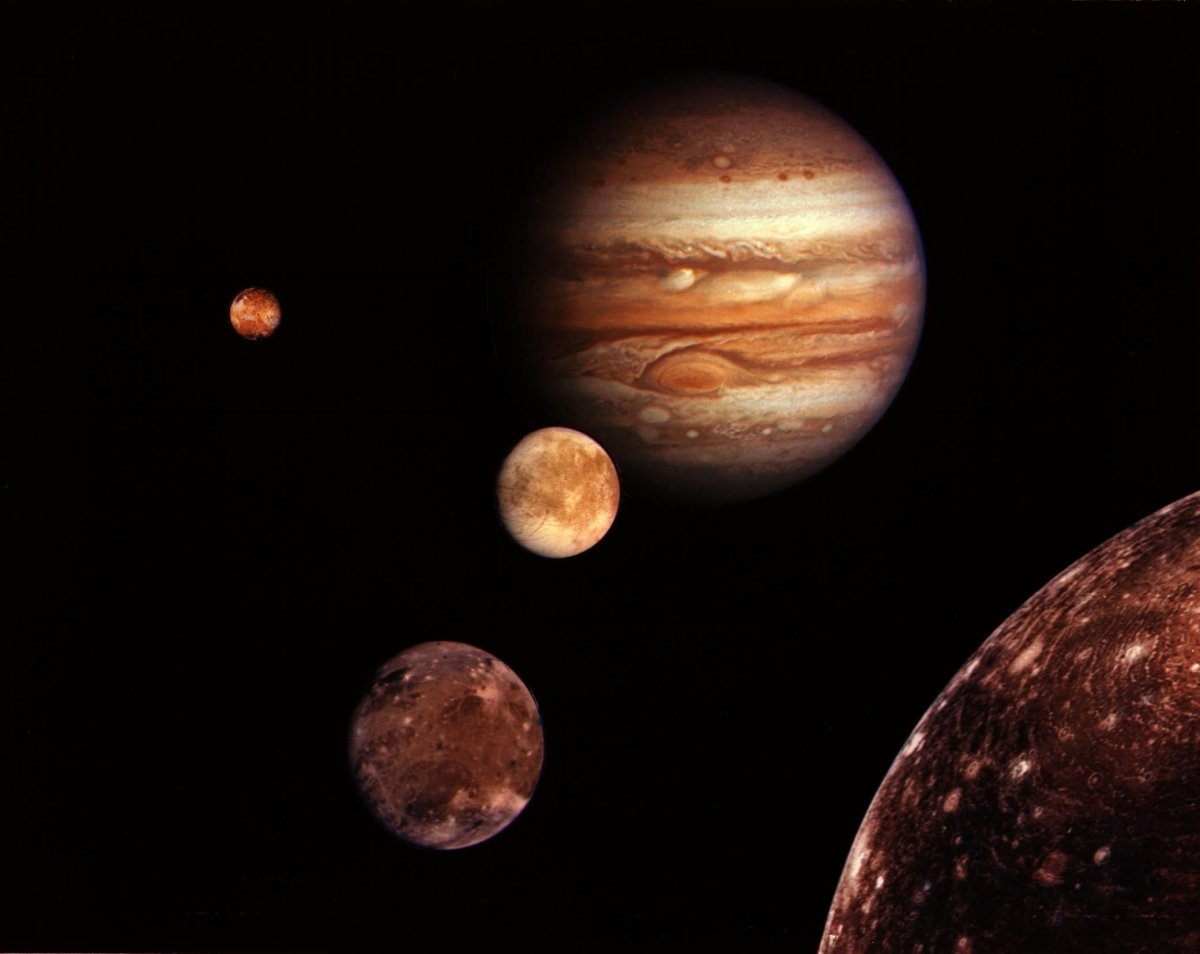Saturn is the second biggest planet in our neighborhood, and new scientific models suggest it has certainly pulled its weight in making the solar system look the way it does today.
In particular, Saturn's mass may have been responsible for forming Jupiter's four largest moons, according to a paper recently posted to the pre-print server arxiv.org. Io, Europa, Ganymede, and Callisto are referred to as the "Galilean moons" in honor of their discoverer, Galileo Galilei. "Largest" is not just comparatively speaking here: Ganymede is bigger than the planet Mercury, and all three of the others outsize ex-planet Pluto.
"Unveiling the critical role of Saturn in delivering the building blocks of the Galilean satellites was quite exciting," the paper's lead author Thomas Ronnet, a doctoral student in astrophysics at Aix-Marseille University in France, told Space.com. "These findings stress how the presence of giant planets helps shape planetary systems and the distribution of minor bodies."
Read more: Mars's Two Tiny Moons Were Formed After an Asteroid Hit the Planet, New Theory Suggests
Because the Galilean moons are so big, their formation has always been difficult to explain. You need a model that can put an awful lot of material in a disk around Jupiter. And that needs to happen at precisely the time when Jupiter itself would have been forming, exerting its own hefty gravitational tug that would have pulled in some of its surrounding material to join the new planet, similar to a giant vacuum cleaner.
The new model finds that Saturn can help solve those problems, with the early planet dancing past the edge of the vacuumed zone. The scientists think that would have flung the raw ingredients of the Galilean moons into the right zone to stick together.

The Galilean moons fascinate astronomers because they are so geologically complicated. They aren't simply big hunks of quiet rock: Io is covered in volcanoes, Europa's icy surface hides a giant ocean, and Ganymede and Callisto may well do so too. And those subsurface oceans are some of the most promising sites for finding life in our solar system.
The astrobiological appeal of these moons means that scientists are dreaming up probes that will gather more data about them—including missions due to launch in the 2020s.
Uncommon Knowledge
Newsweek is committed to challenging conventional wisdom and finding connections in the search for common ground.
Newsweek is committed to challenging conventional wisdom and finding connections in the search for common ground.
About the writer
Meghan Bartels is a science journalist based in New York City who covers the science happening on the surface of ... Read more
To read how Newsweek uses AI as a newsroom tool, Click here.








